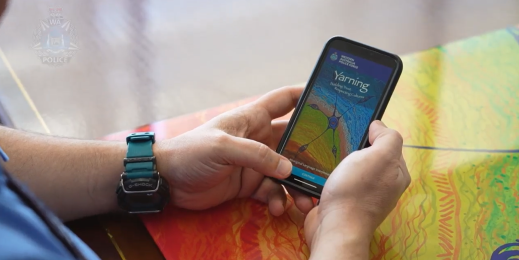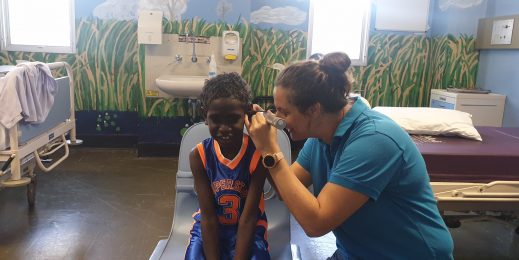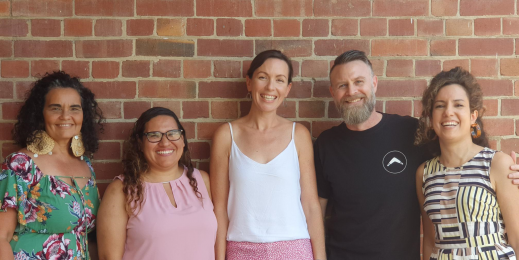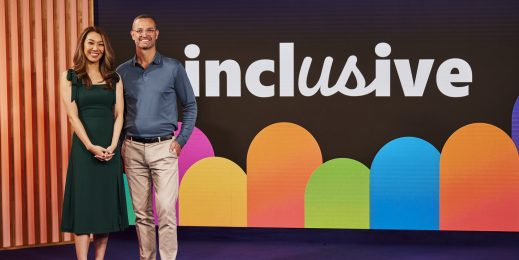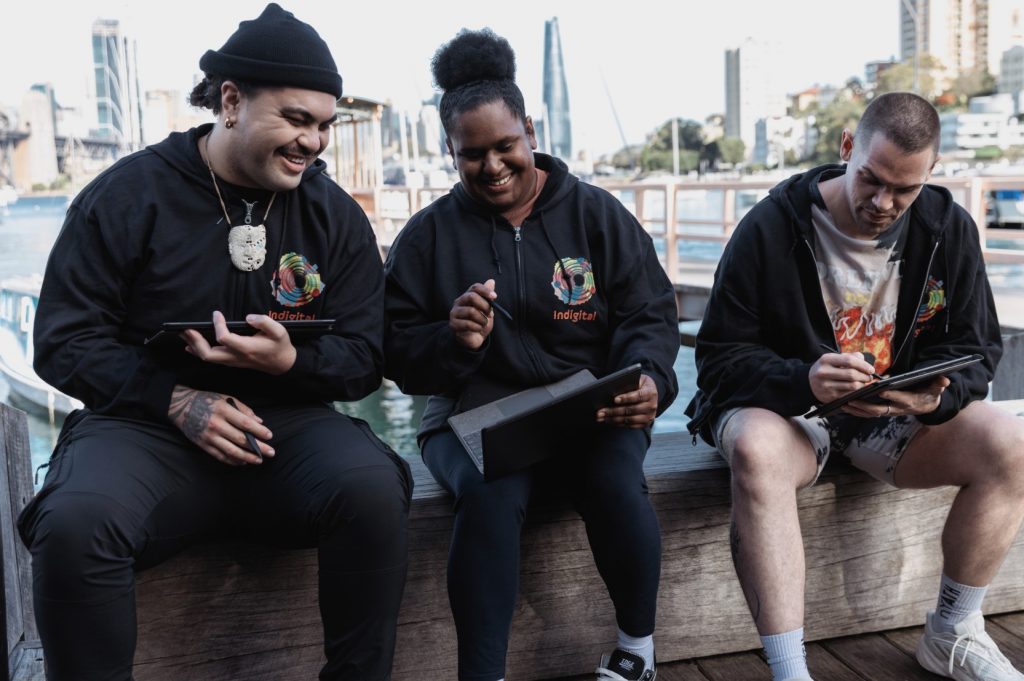
Three artists, three cultures, one incredible artwork
Mikaela Jade, a Cabrogal woman, is sure her Ancestors would have wanted their culture upheld through the newest tools available. After all, she says, First Nations Peoples have always imagined their cultures in the future. However, their artwork, knowledge, language, and law are still most frequently seen in galleries and put onto beautiful fabrics.
What would happen if these traditional modes of expression were pushed, she wondered? How could technology be used to capture and amplify tens of thousands of years of cultural knowledge systems as well?
These are the questions her company, Indigital, Australia’s first Indigenous-led EduTech startup, is asking. Their mission is to support First Nations Peoples in preserving and proliferating their own stories through technologies including augmented and mixed realities, AI, and machine learning.
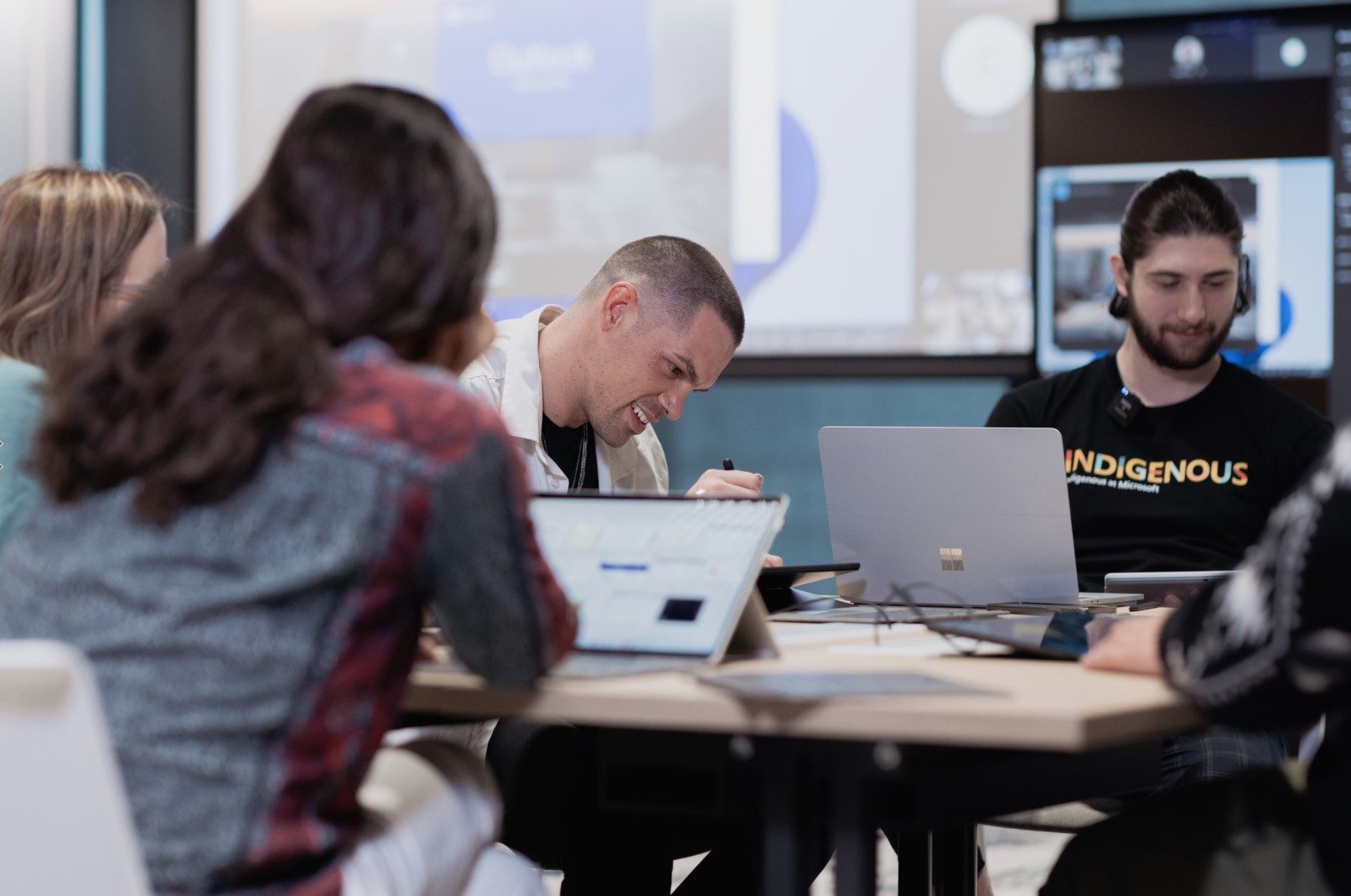
Most recently, they invited three First Nations artists — Lala Gutchen from Erub (Darnley) Island, Kobi Sainty from Naarm (Melbourne), and Tawhanga Rika from Rotorua — to merge their creative styles in a ‘wrap’ for Microsoft Surface devices.
After months of working together, in-person then virtually on Microsoft Teams, their completed artwork is now available for Surface users to bring the front of their device to life*.
The design invites the next generation of Māori, Torres Strait Islander and Aboriginal youth to celebrate their history as the original scientists, technologists, engineers, and mathematicians. It also provides a unique reminder that the devices we use every day —sometimes without a thought — are built upon tens of thousands of years of unbroken Indigenous knowledge.
Finding common ground
When first introduced culture-way (exchanging their mother tongues and cultural expressions) at Microsoft’s Sydney office, there was some trepidation between the trio.
How would their artistic styles mesh, they wondered? And be captured on the front of a Surface device?
Over the course of a two-day workshop, they bonded over how the night sky, like all their cultures, has existed since the dawn of time.
“This is how we are all connected because we all have a star that navigates us,” says Tawhanga, a Māori man based in Whakarewarewa Village, Rotorua.
“I kind of look at Kobi and Lala as another Māori, another native like myself, and then I can relate to a lot of what they say and what they do,” he says. “And so that makes it really special.”
Lala, an Erub woman from the Meuram tribe in the Torres Strait, agrees that “most of us have similarities, so we can really link with each other to create the artwork for the collaboration.”
Kobi, a Bunurong and Palawa man from South-Eastern Kulin Nation, also appreciates how things “flowed really easily” as the group “chatted about stories, similarities and connections across Our Peoples, Dreamtimes and stars.”
Bringing it all together

Their final Surface wrap artwork is composed of cosmic overlays, vibrant waterways, traditional headdresses, stone fish traps, Yarning Circles, lush nature and traditional tāmoko designs and weaving symbols.
Each element is intentional: Lala is a fisherwoman, feeling most connected to her ancestors while at Sea Country. Kobi was reminded of his Peoples gathering in a circle while exchanging stories with the other artists. And Tawhanga wanted to honour the fresh spring water and hot springs that surround his village, which influence his work alongside the tattoo art he shares with his Elders.
All the symbols are fundamental to how each artist’s community understands their place not just in the world, but the universe too.
“First Nations Cultures centre on Country, and Country means our lands, our water, our Sky Country,” Mikaela considers.
I think it’s beautiful that the artists have looked up to the sky and have connected each of their cultures through the stars in the most traditional of ways.
While it was a challenge to coordinate internet access for Lala, she asks: “how else is she supposed to reach a global audience if she doesn’t have these kinds of platforms available to her?”
Lala Gutchen @privvgutchen_islandlife
Lala has sky-high ambitions and the talent to match. Hailing from an extended family of artists and craftsmen, she describes her art as centred around her journey as a young indigenous women seeking to revive her cultural identity in a colonised world. After winning an art competition as a child, she completed diplomas in Cultural and Western Visual Arts.
Before working with Indigital, she was used to drawing on paper or painting on canvas, then stepping back and layering over the top several times to create her art.
“Putting my artwork onto a digital screen was a new thing for me when it came to looking at and mixing colours,” she says. “But I like that once it’s on the screen, you can always go back to it and make changes easily or backtrack,” she says.
“My art represents my interpretation of my culture and practices but in a modern way,” Lala said of her contribution to the wrap design. “From the diamond designs representing our Warup [traditional drum] to the zig zag lines that signify my father’s people’s ancient stone fish traps, the connections of the lines and dots is like using the star constellations like my ancestors did to navigate the world.”
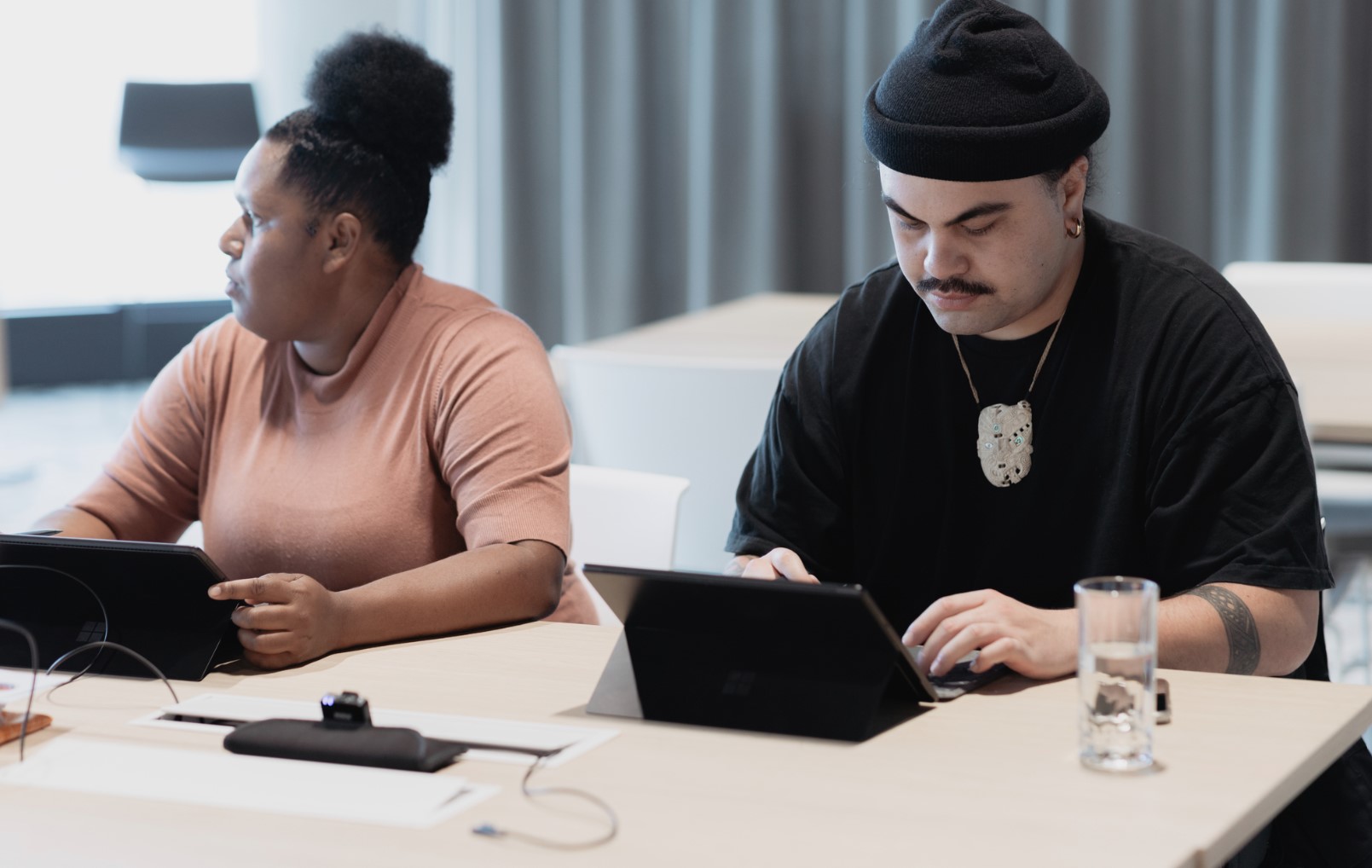
The language facilitator, passionate about preserving her native Erub Mer language, found working with digital tools deepened her desire to collaborate with other First Nations artists.
“It’s also exciting to see younger people on the Island get into digital art and use apps,” she says.
Lala’s sights are now set on creating an interactive e-book, animation, and cartoon series about her culture and language for the youth in her community and those living on the mainland.
Tawhanga Rika @rauruarts
Tawhanga also found the Surface Slim Pen’s mirror imaging and erasing capabilities emboldened him to experiment further with his artistic style. As a traditional Māori tattoo artist, specialising in tāmoko, he wasn’t usually able to make changes once his designs were complete. But he welcomed finding new ways to bring his ancient culture and artforms into the digital world.
“This is a natural thing for us, creating art, and I feel like Indigenous Peoples can adapt easily to these types of things — obviously,” he says. “We just need to learn how to use the tools, but we’ve been doing this since before time.”
As a father of two, he wants to share his past and genealogy with his kids through stories around their ancestry and art, as his elders did for him.
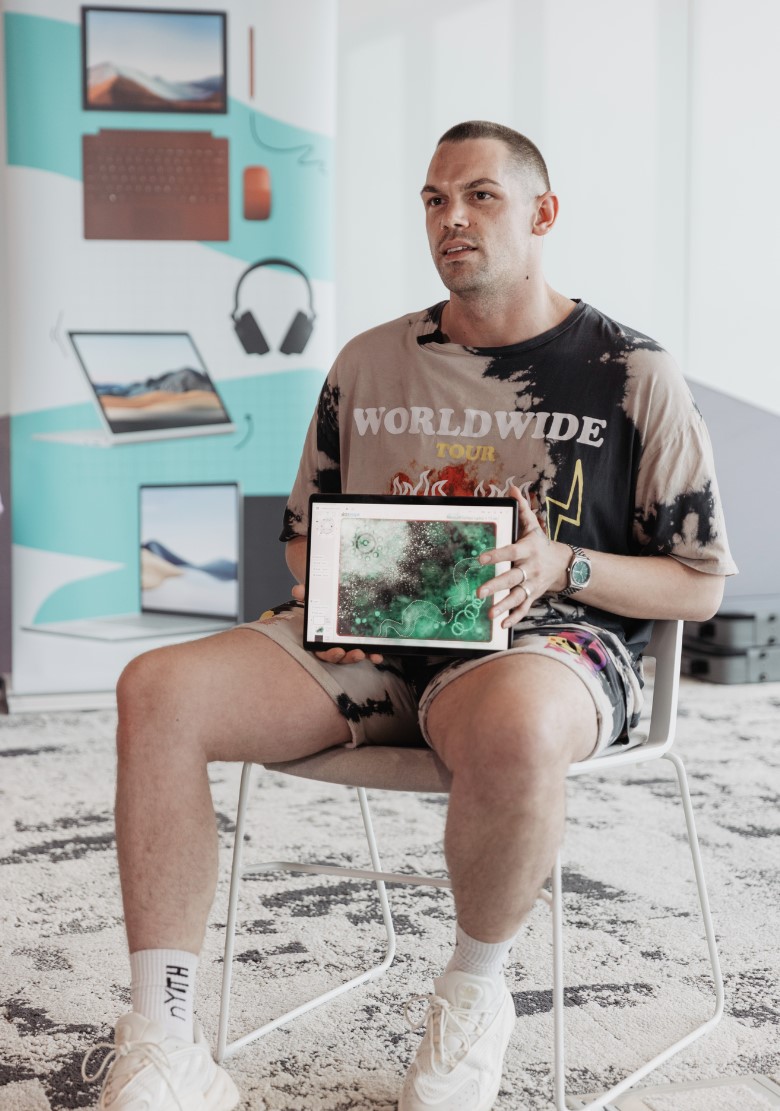
Drawing inspiration from weaving, traditional wood, bone, and stone carving, and the performing arts at the heart of his community, he now sees digital artwork as another avenue to “promote, preserve and share the Māori culture, our hearts and traditions.”
Kobi Sainty @kobisaintyart
Kobi is grateful his grandparents, also creatives, instilled a deep sense of community connection in him. Though he didn’t always consider himself an artist, after working with Indigital he became drawn to layering watercolour art through the creative apps on his Surface device and was surprised with how natural it felt.
“With digital art, I try to layer as much as I can as if it was a canvas,” he says. “I want it to still get that texture and different gradients and seem as real as it can be.”
The language education officer feels digital tools give him another way to creatively tell his community’s story, which he is immersing himself in by spending time on Country.
With dreams of opening a studio, he currently runs workshops for other First Nations youth to help them see the value in pursuing their creative goals.
“Projects like this mean they’re seen and there are paths opening for them to be able to have accessible goals,” he says.
People will be able to see our artwork and aspire towards their own creative vision.
Looking to the future
With nine out of ten jobs requiring digital skills, showing young Indigenous creatives the opportunities that the creator economy provides — to commercialise their work, conduct it on Country and continue their cultural connections and responsibilities if they choose — is crucial to closing the digital divide.
The Indigital team sees hesitation turning to awe daily as students in their regional and remote programs gain confidence in harnessing new technologies.
“We went from developing holograms for people to empowering people to develop their own storytelling,” Mikaela says of their long-standing partnership with Microsoft. “The real thing that gets me out of bed every day is seeing that transformation when someone believes they can do it.”
These latest Surface device wraps, she feels, speak to the need to engage communities wherever they are in the world, and the potential of First Nations Peoples to make it in cutting edge technology.
“We want to inspire our people not just to look backwards at our culture, but to move forward and consider what Our Peoples are today, and what we’d like to be in the future,” she says.
Projects like this allow us to express ourselves as futurists and to be able to imagine what it is to be an Aboriginal, Torres Strait Islander or Māori First Persons in the 21st century and beyond.
*Royalties from the wraps will be passed on to the artists
The wraps will be available for a limited time at Microsoft Experience Centre in Sydney as a free gift with any purchase of a Surface device.





